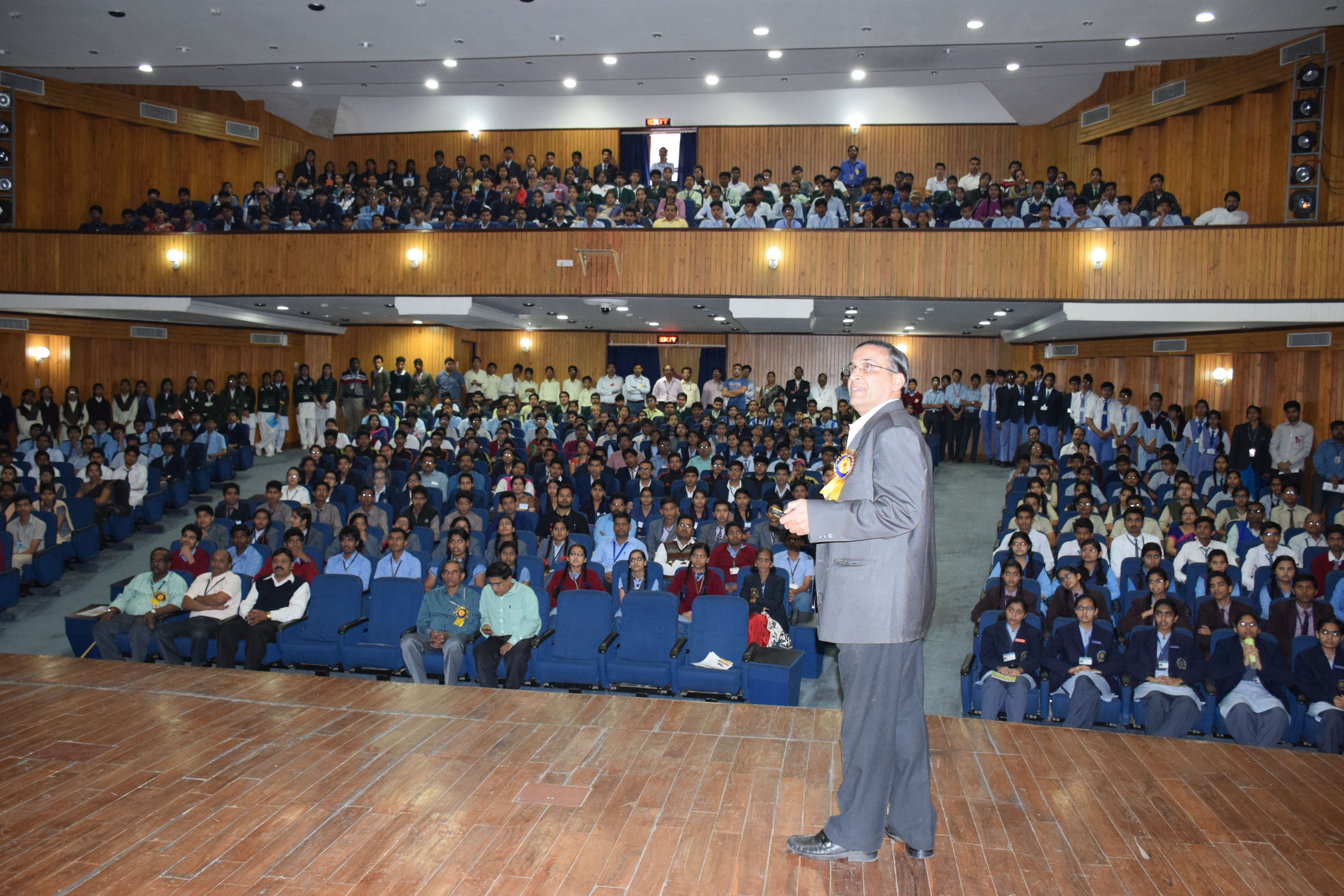|
Happenings
|
|
National Science Day celebrated at RRCAT on 27th and 28th February 2016
|
|
National Science Day is celebrated in India on 28th February of each year to commemorate the discovery of the Raman Effect by Prof. C. V. Raman. Raja Ramanna Centre for Advanced Technology (RRCAT) celebrates National Science Day every year on the last Saturday of February by holding an open house for school students, teachers, family members of staff members and invitees from public. Over the years, this event has become extremely popular and is in great demand from the students, schools, and colleges. Therefore, this year also the celebrations were planned for two days. On Saturday, February 27, 2016, school students and teachers were invited for a full day visit and the next day, family members/guests of staff members visited RRCAT. A number of scientific exhibits were set up at 16 different laboratories to explain the scientific and technical activities of RRCAT and to demonstrate a few concepts in basic sciences. There were exhibits related to technologies of Accelerators, Lasers, Cryogenics, Superconductivity, Magnets, and demonstration of Fire & Safety aspects. Co-conveners Shri H. S. Vora and Shri Rajesh Arya had made elaborate arrangements for the celebration, with the help and enthusiastic cooperation of the Coordination Committee, sub-committees, volunteers, exhibitors, administrative staff, and security personnel.
On the first day, about 1500 students and teachers of 112 schools from Indore and nearby places visited the exhibits. The program started with an address by Dr. P. D. Gupta, Director, RRCAT. Dr. Gupta explained several complex aspects of science and technology lucidly by giving practical examples from day-to-day life. He also gave an overview of recent important activities at RRCAT in the field of Lasers and Accelerators and explained their utility and applications. His simple and lucid explanations had a stimulating effect on the students and teachers
After Director's address, all the students were taken to different laboratories in organized groups under the guidance of RRCAT officials. There were working exhibits on lasers like X-ray laser, XeCl Excimer laser, CO2 laser, tunable dye laser, and demonstrations on applications of lasers like: laser cutting, laser marking, laser additive manufacturing, use of light and lasers for biomedical applications etc. There were interesting experiments with liquid nitrogen; demonstration on glass blowing; water-jet cutting machine; working models on: glow discharge, bright plasma streamers in air, laws of motion, superconducting levitated magnetic train, magnetic hysteresis, induction heating etc. Videos on Indus Synchrotrons and their uses, development of SCRF cavities, indigenous 10 MeV linear accelerator, laser additive manufacturing etc. were shown. The students and teachers found the exhibits very interesting. RRCAT fire station arranged live demonstrations of fire-fighting equipment and techniques, which were also highly appreciated.
A “Make in India Gallery” was specially set up this year to showcase recent important scientific achievements and in-house technology developments carried out at RRCAT. The achievements and developments were exhibited with the help of illustrated posters, working models and actual components, which greatly enthused the students and teachers.
An "Ask-a-Question Desk" was set up for the students who visited RRCAT on Science Day with an aim to create an opportunity for free discussion between these young minds and working scientists. Several RRCAT scientists were available to interact with the students who were also encouraged to ask questions. The discussions ranged from questions arising out of the exhibits at RRCAT for Science Day to basic scientific concepts. The event also encouraged the accompanying teachers to discuss their problems in teaching particular concepts of science. Participation prizes were awarded to students.
Snacks and lunch were served to all the students and accompanying faculty members. The overall response of the students was extremely enthusiastic as demonstrated by the number of queries they put in during the visits to the exhibits and at the “Ask-a-Question Desk”, when senior scientists addressed their queries in an interactive manner. They went back full of admiration for the scientific activities being pursued by DAE in general, and RRCAT in particular.
On the next day, the exhibits were kept open to the family members of RRCAT staff and invitees from public. More than 2100 family members of staff and invitees from public visited the laboratories and expressed their joy on getting an opportunity to learn about the important R & D activities being carried out at the Centre.
|














